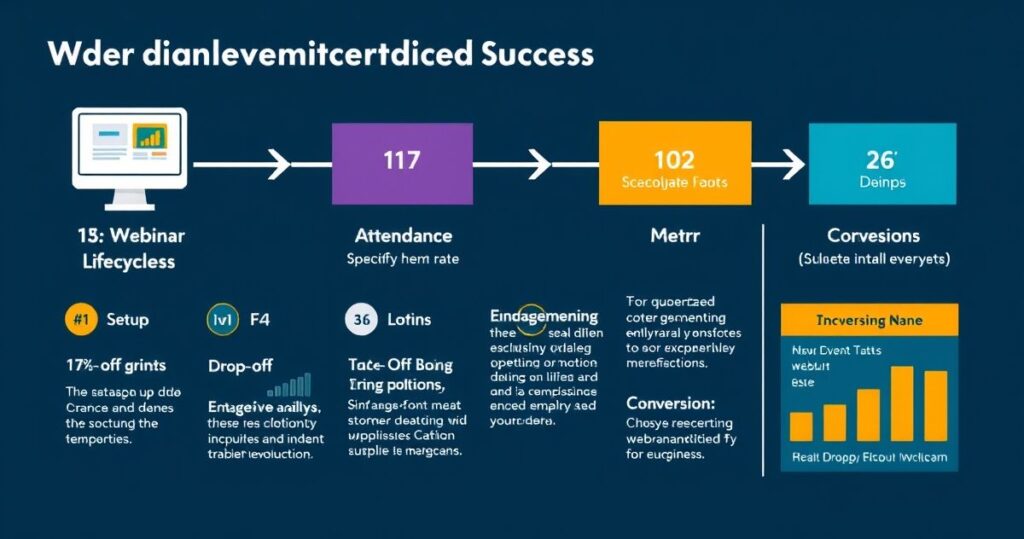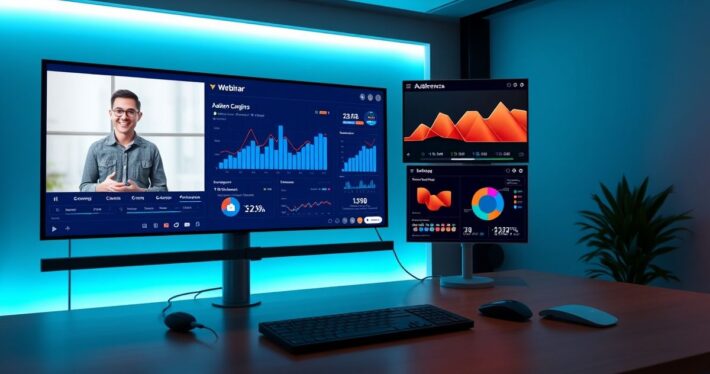Why data matters: Unlocking hidden insights from webinar reports.

Webinars have become a cornerstone of modern marketing strategies, offering a unique blend of education, engagement, and conversion opportunities. But here’s the thing: hosting a webinar is just the beginning. The real magic lies in the data you collect and analyze post-event. Why does data matter so much? Because it holds the key to unlocking hidden insights that can transform your webinar strategy, boost engagement, and skyrocket your conversion rates.
Think of your webinar data as a treasure map. Every click, view, and interaction is a clue that can guide you toward more effective content, better audience targeting, and higher ROI. In this article, we’ll dive deep into why data matters, how to analyze webinar reports, and practical ways to use these insights to elevate your future webinars.
Why Data Matters for Webinar Success
Let’s be honest—webinars can be time-consuming and resource-intensive. Without data, you’re essentially flying blind, guessing what worked and what didn’t. But when you harness the power of data, you gain a clear picture of your audience’s behavior, preferences, and pain points. This isn’t just about vanity metrics like attendance numbers; but it’s about understanding the nuances that drive engagement and conversions.
For instance, did you know that the average drop-off rate for webinars is around 40%? That’s a significant number, but with the right data analysis, you can identify exactly where and why attendees are leaving. Maybe it’s the transition between slides, or perhaps the Q&A session wasn’t as engaging as it could be. Whatever the reason, data provides the insights you need to make informed improvements.
Key Metrics to Analyze in Webinar Reports
Not all data is created equal. To unlock hidden insights, you need to focus on the metrics that truly matter. Here are some key performance indicators (KPIs) that should be on your radar:
-
Attendance Rate: This tells you how many registered attendees actually showed up. A low attendance rate might indicate issues with your registration process or promotional strategy.
-
Engagement Rate: Measures how interactive your audience was during the webinar. This includes questions asked, polls answered, and chat activity. High engagement often correlates with higher conversion rates.
-
Drop-off Points: Identifying where attendees leave can help you pinpoint problematic sections of your webinar.
-
Conversion Rate: The percentage of attendees who took the desired action (e.g., signing up for a service or purchasing a product). This is arguably the most critical metric.
-
Feedback Scores: Post-webinar surveys can provide qualitative insights into what your audience enjoyed and what they found lacking.
Practical Ways to Use Webinar Data
Now that you know which metrics to focus on, let’s talk about how to use this data to improve your future webinars. Here are some actionable tips:
Optimize Content Structure
Analyze drop-off points to identify sections of your webinar that may be losing your audience’s interest. For example, if data shows a significant drop-off during the product demo, consider making it more interactive or concise.
Enhance Engagement Strategies
Use engagement metrics to refine your approach. If polls or Q&A sessions are getting high participation, consider incorporating more of these elements into future webinars.
Improve Targeting
Demographic data from your webinar reports can help you better understand your audience. Use this information to tailor your content and marketing efforts to resonate more effectively with your target demographic.
Boost Conversions
Conversion rate data can reveal which parts of your webinar are most effective at driving action. Maybe it’s the ‘how to use this product in real life’ demonstration that wins the deal. Use this insight to highlight these winning elements in future presentations. Better still, create a rock-solid offer and use conversion rate insights during the CTA to fine-tune its delivery for maximum impact.
Case Study: How Data Doubled Conversion Rates
Let’s look at a real-world example. One of our clients, a SaaS company, was struggling with low conversion rates for their webinars. After analyzing the data, we discovered that attendees were most engaged during the 20-minute product demo, but engagement dropped significantly during the Q&A session. We suggested shortening the Q&A and adding an interactive poll during the demo. As a result, their conversion rate doubled in just two months.
This case study illustrates the power of data. By focusing on what the numbers were telling us, we were able to make targeted improvements that had a significant impact on the client’s bottom line.
Tools to Help You Analyze Webinar Data
In addition to using internal data analytics tools, there are several third-party tools that can help you get more out of your webinar reports:
- Google Analytics: Great for tracking traffic sources and audience demographics.
- Hotjar: Provides insights into user behavior through heatmaps and session recordings.
- HubSpot: Offers robust analytics for tracking engagement and conversions.
However, here’s a pro tip: consider using AI-powered webinar creation tools like our AI Slide Outline Creator that automatically structure your slides for maximum engagement based on data-driven insights. It’s like having a webinar coach that knows exactly what works to keep your audience hooked.
Overcoming Common Challenges
Of course, working with data isn’t without its challenges. One common issue is data overload—too much information can be overwhelming. Focus on the metrics that align with your goals and use tools that simplify the analysis process. Another challenge is ensuring data accuracy. Make sure your webinar platform is set up correctly to track the right metrics.
Final Thoughts: The Future of Webinars is Data-Driven
The landscape of webinars is constantly evolving, and the key to staying ahead lies in leveraging data. By diving deep into your webinar reports, you can uncover hidden insights that will help you create more engaging, impactful, and high-converting webinars. Remember, the goal isn’t just to host a webinar—it’s to deliver an experience that resonates with your audience and drives real results.
So, are you ready to unlock the full potential of your next webinar? Start by taking a closer look at the data. You might be surprised at what you find—and the opportunities it uncovers.


